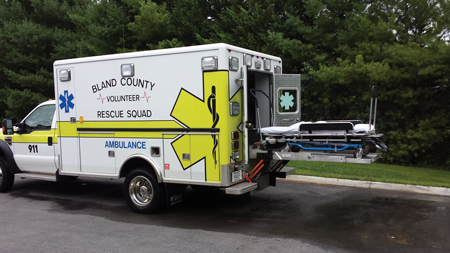In an ideal world, Ambulances would become an integrated bubble of safety where dangers are practically eliminated, precautions are double-redundant, and caregivers and patients are secured in various ways while in transportation.
Ambulance manufacturers have developed many safety precautions, but vehicle crashes, including ambulances, are very common. We must consider the long-term, large picture, and the short-term, urgent prospects to transform our safety culture. Here are seven simple recommendations to help improve the safety of ambulance patients and operators.
Manufacturers Should Follow Current Standards
During the last 40 years, the ambulance business has had no national control and few safety regulations for building. The Federal KKK-A-1822F (KKK) standard was the industry’s only standard for many years, having been developed to procure federal ambulances.
Although some broad allusions to ambulance construction, this text was not written with safety in mind. The Commission on Accreditation of Ambulance Services (CAAS) has replaced the KKK standard with Ground Vehicle Standard (GVS v.1.0) for automotive ambulances.
The new standards aim to increase safety through new design principles, performance criteria, and testing requirements. The new safety requirements should be read and adopted as your first step toward building a safer ambulance.
Training Is Must
To reduce accidents and injuries, education and training are required. The operation of an emergency vehicle entails a great deal of responsibility, so all emergency care workers should be mature and experienced.
Testing, behind-the-wheel instruction, and classroom time are all part of an approved training program. It is critical to take refresher classes.
The Vehicle’s Visibility
The ambulance’s visibility is critical for other people to know when it is parked and approaching. The personnel’s safety is mostly dependent on vehicles and pedestrians recognizing the vehicle.
With audible warning systems and correctly positioned emergency lighting, crew and patient safety can be improved. Ambulance visibility is improved at night and during the day with suitable emergency car lights.
According to current requirements, the retro-reflective striping on the ambulance should be increased by 25% on the front side and 50% on the remaining sides.
- Enhanced Security in the Patient Compartment
Patient compartments were not required to be as secure as other portions of the ambulance since previous SAE regulations recognized that people in the patient compartment would need more movement to support patient care.
The most recent standard mandates the same level of protection as other compartments. Seats must be placed according to the manufacturer’s instructions, with no aftermarket modifications, and crash-tested. This safeguards your staff in the event of a crash, allowing them to continue caring for patients.
Lifting Systems for Cots
With the escalating expense of workers’ compensation injury claims, having an electric stretcher, hydraulic cot raising system, or lift-gate system on hand can help crew members avoid back problems and even extend their careers.
A lifting system may appear costly at first glance, yet they provide a significant return on investment. A ramp or lift-gate system has the advantage of accommodating a range of cots and various types of equipment like incubators and balloon pumps.
- Regular Maintenance
Ambulances in today’s world are equipped with a variety of high-tech technologies. Every ambulance should have a complete maintenance plan for the safety of the passengers.
Proactive maintenance can reduce vehicle downtime and costly repairs and extend the life of the vehicle and prevent failures during an emergency.
- Suspension and Chassis
The ambulance’s suspension and chassis are key components for its safety. The strength of the ambulance chassis should be determined by the type of load that the ambulance will carry. The chassis you choose should be capable of carrying more than the maximum weight you anticipate to transport.
Always keep in mind the Gross vehicle weight rating (GVWR), which is the ambulance’s maximum operational weight. If you overload this component with heavier loads, the vehicle will be difficult to break and stop, especially at high speeds.
Maintain the cleanliness of the ambulance. This makes it easy to locate important equipment when it is required. In the case of a collision, it also guarantees that litter does not become a dangerous projectile.
The new safety requirements signal a trend toward making ambulance passengers as safe as passengers in other vehicles. Crash test standards must be met by ambulances. It’s worth noting, however, that the safety of an ambulance is heavily reliant on the drivers. So, ensure that drivers respect the road regulations, particularly while transporting non-emergency passengers.
